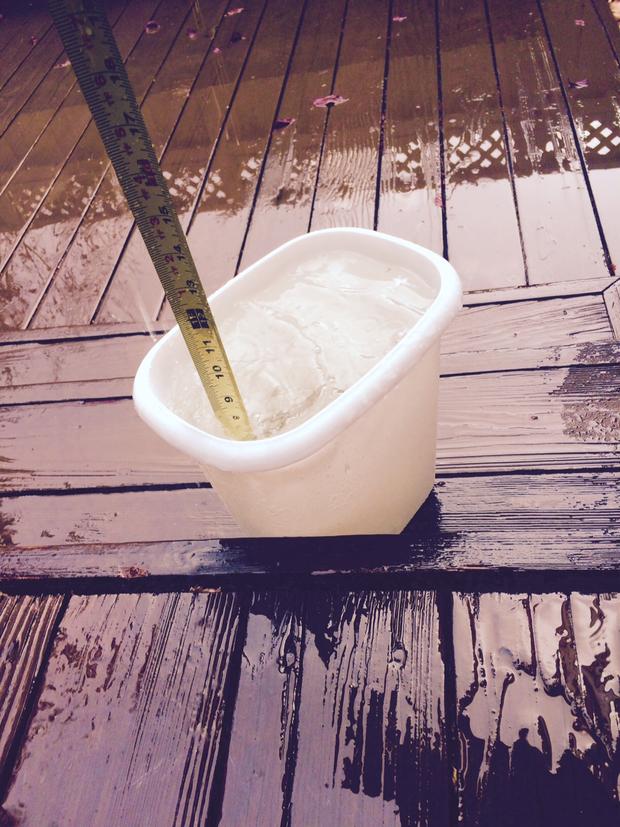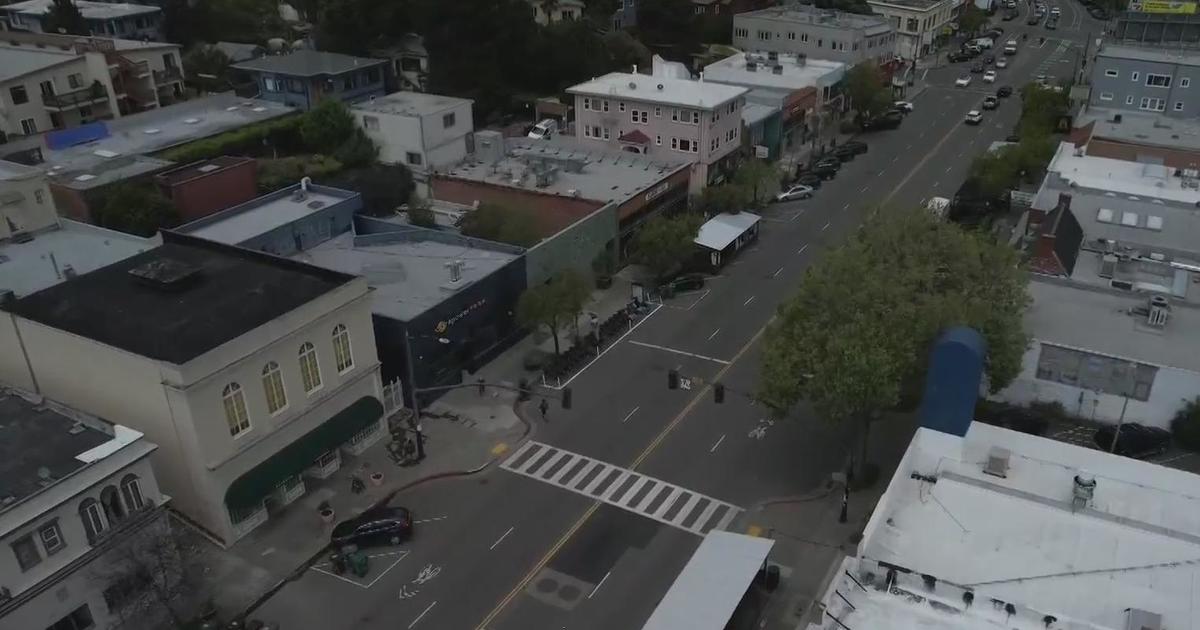How To Make An Accurate Rain Gauge
KPIX 5 Morning Weather Anchor Roberta Gonzales answers the questions you never get to ask on-air.
Q: Can you recommend a rain gauge for me and where to find one? Manny Vasquez; San Jose
A: Hi Manny! Sure I can! But you can make your own too!
Ok, this is going to be one of those "do as I say, not as I do" blogs. On Monday, the Bay Area was blessed with measurable rainfall. It's about time! I was so excited about the possibility of an inch of rain, I quickly grabbed a fairly straight trash can from my garage and placed it in the backyard. I couldn't wait to see the results as I drove home from the studio yesterday.
Take a look at my picture of my white trash can and the measuring stick.
Granted, I placed the trash can outside before the rain began only to gather water. Not to use as an official "rain gauge," but I became curious! There was so much water in the can, I wanted to know how much, so I measured it. Hmm…over 8 inches. That can't be right! Or could it be?
Here's how to make an accurate rain gauge:
I am reminded by my studies, rain is measured by how much falls over a certain area at a certain time. So if I have a trash can or bucket with straight sides, which means it is not narrow at the bottom, my rain measurement would be fairly accurate. However, I cheated.
Not only was the mouth of the trash can wider, my can was located in the wrong place. Since my purpose for gathering rain water was for volume, not measurement, I placed my bucket next to the rain gutter attached to my roof, which snakes down the side of my house.
By doing so, I accumulated terrific runoff! An amazing accumulation of precious water for dampening my outside plants and flowers later this week, but nowhere close to an accurate assessment of rainfall from Monday's storm.
The "exposure" of the rain gauge is the greatest source of error! What I learned from the National Weather Service is, when placing your rain gauge outside your home, make sure the rain gauge is not blocked by nearby obstacles (trees or buildings) making your rainfall total lower than what it should be.
Also, rain may be blown FROM or INTO the gauge by wind gusts accompanying the rain storm. Theory is, the gauge should be placed twice the distance as the height of the closest obstacle. This makes sense, but you need to still keep it sheltered from the wind.
If you want to build your own rain gauge the National Oceanic and Atmospheric Administration (NOAA) has created an instruction list for you here.
Do you have a question or observation you would like to share with me? I would love to hear from you! Please email Gonzales@kpix.cbs.com




